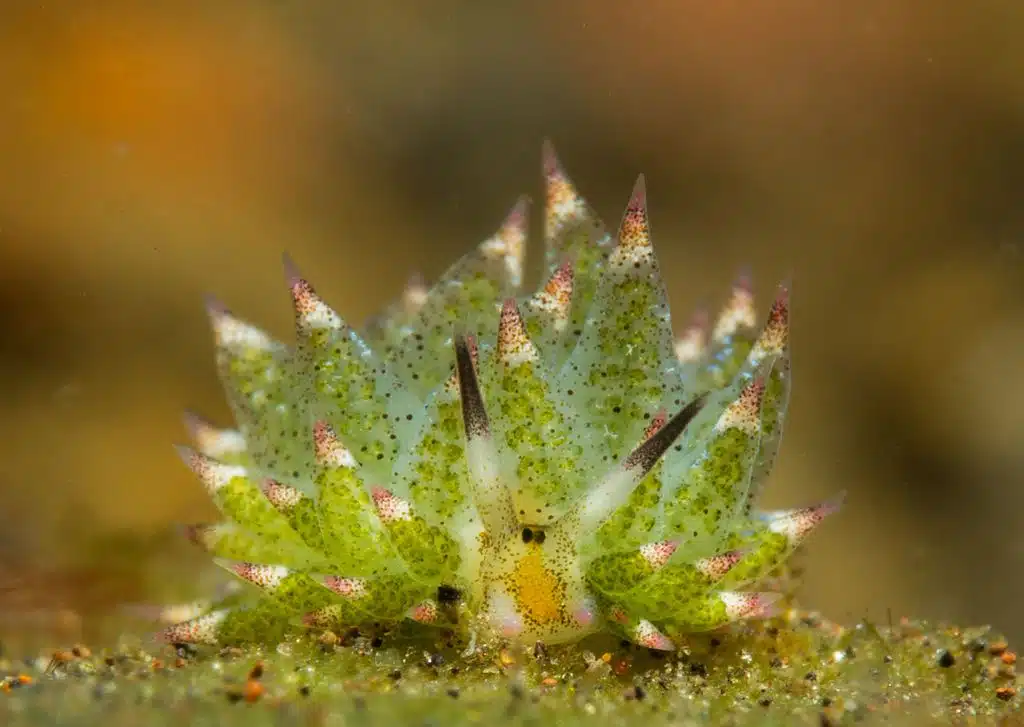I didn’t know what my life was missing until I came across this adorable, yet fascinating sea slug. The leaf sheep, or leaf slug, is the only non-plant organism in the world with the ability to photosynthesize. How incredible is that!
Some Quick Facts About the Leaf Sheep
| Scientific Name | Costasiella Kuroshimae |
| Size | Around 0.4 inches |
| Weight | Around 0.002 ounces |
| Lifespan | Around 1 year |
| Diet | Green algae (and sun!) |
| Reproduction Nature | Hermaphrodites |
The Leaf Sheep’s Looks
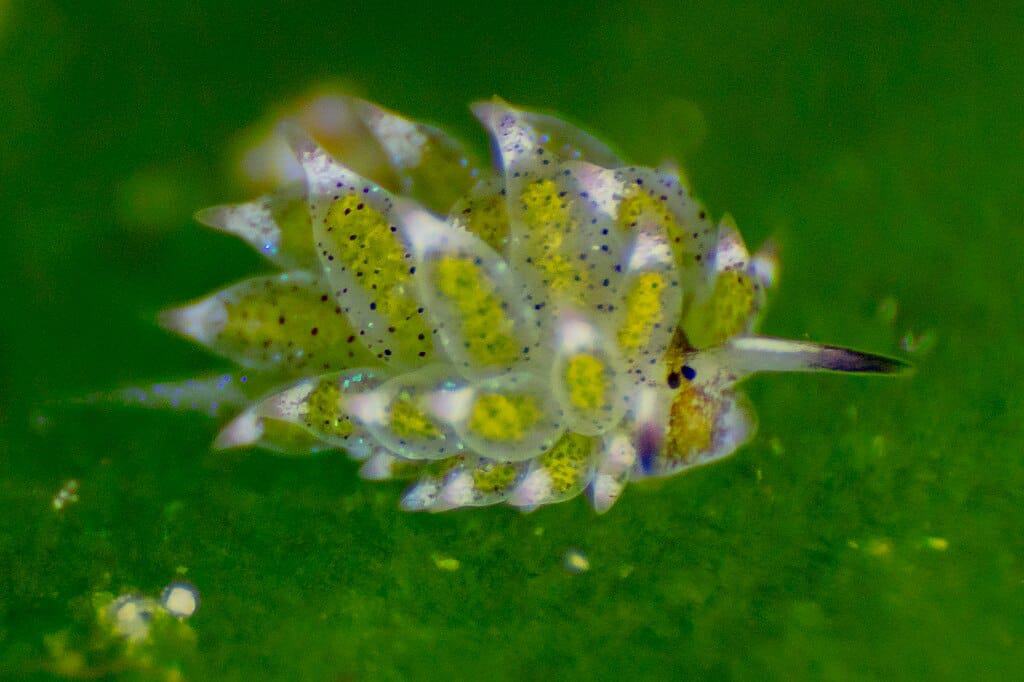
Not only is the leaf sheep undeniably cute, but each of their unique features is as functional as they are adorable! They have two beady black eyes and two black-tipped rhinophores – the feature that resembles their herbivore namesake!
The leaf sheep’s rhinophores have tiny hairs that detect the chemical makeup of the water they find themselves in. Aiding them in navigation, sourcing food, and protection from predators. On their slug-like bodies are their cerata. These green, leaf-like appendages are where the algae chloroplasts they eat are kept – giving them their green color.
The Leaf Sheep’s Diet
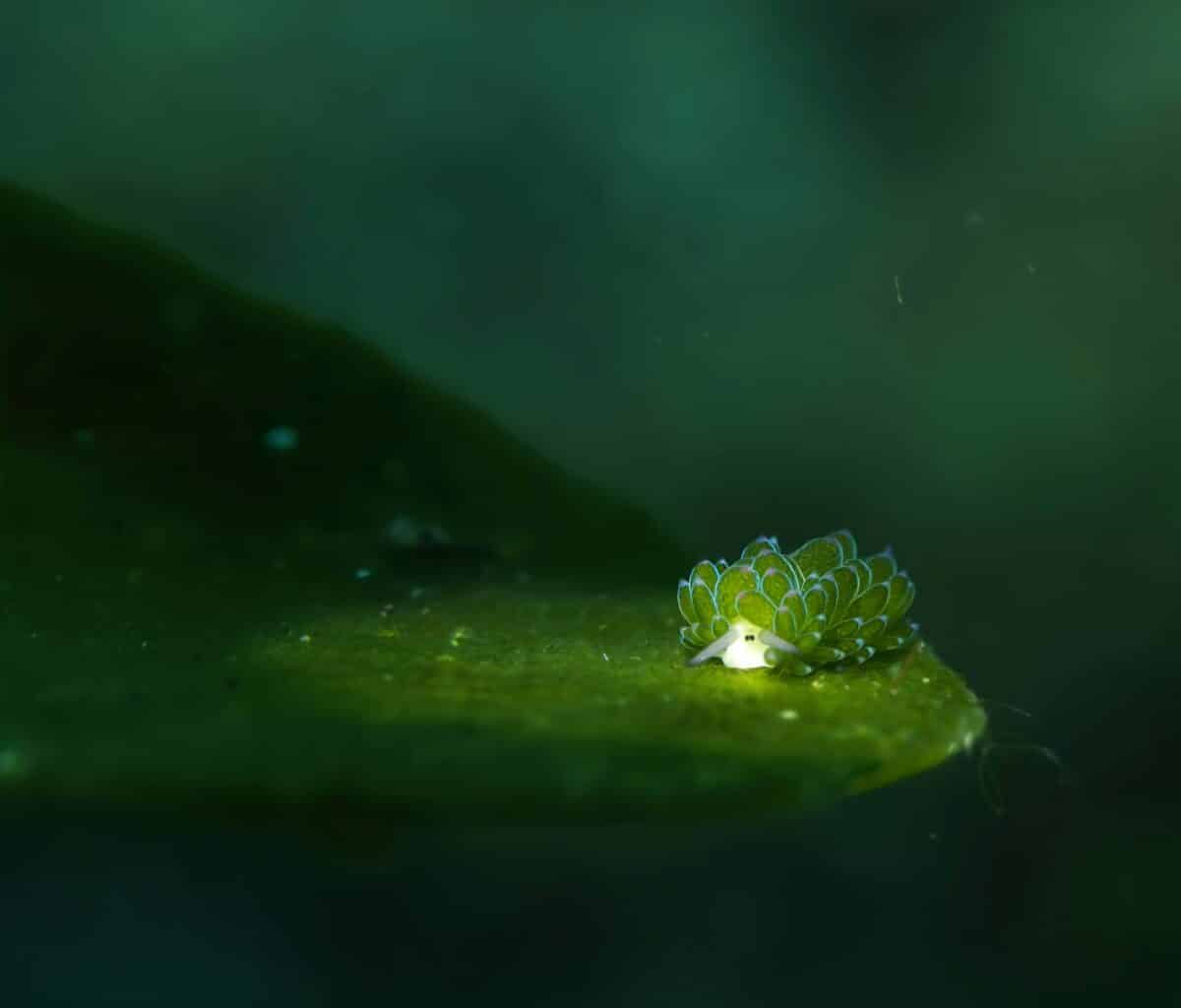
The leaf sheep grazes, much like their mammal namesake. Their diet mainly consists of sea algae named Avrainvillea. Through the process called kleptoplasty, the leaf sheep retains the chloroplasts found in the algae they eat and keeps them in their cerata. The retained alga chloroplasts are organelles that aid the leaf sheep in converting carbon dioxide in the water and sunlight to energy. Allowing them to supplement their diet with photosynthesis – a process known to plants. This way the leaf sheep produces enough energy to survive for several months only on sunshine!
Their Habitat
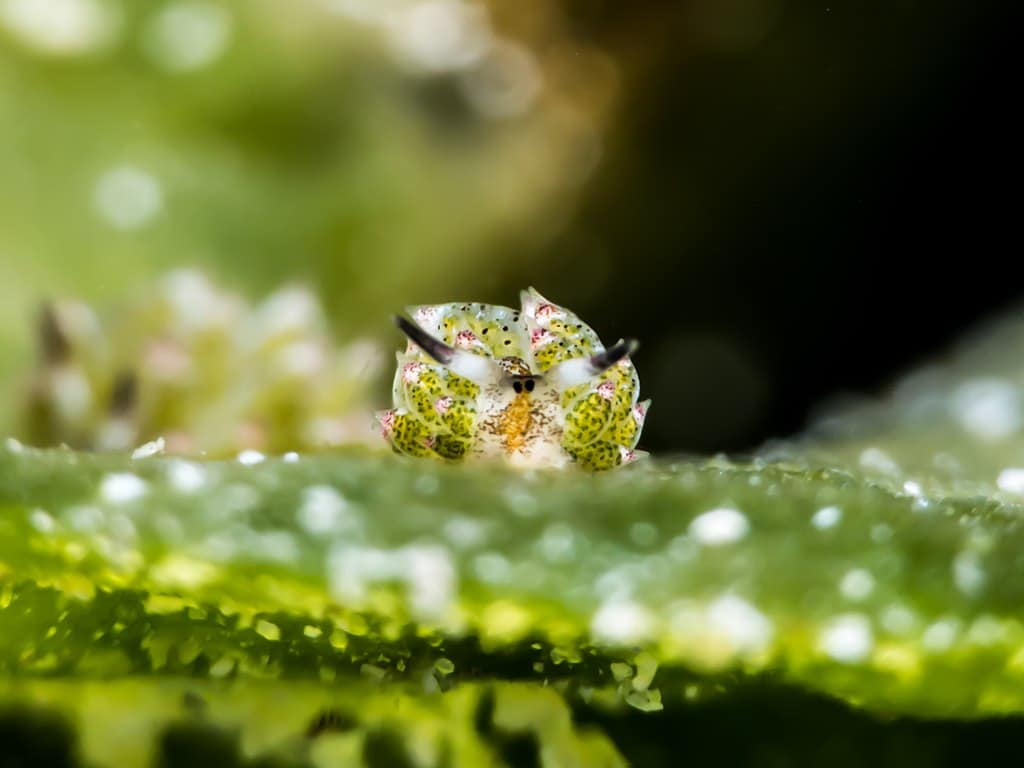
The leaf sheep was only discovered in 1993, near the Japanese island Kuroshima. Since then they have only been seen in the Pacific and Indian Oceans, close to Indonesia, the Philippines, and Japan. They spend most of their lives on the same algae they eat, called Avrainvillea. They easily blend into the algae, allowing them to easily avoid predators.
The Sheep Leaf’s Reproduction
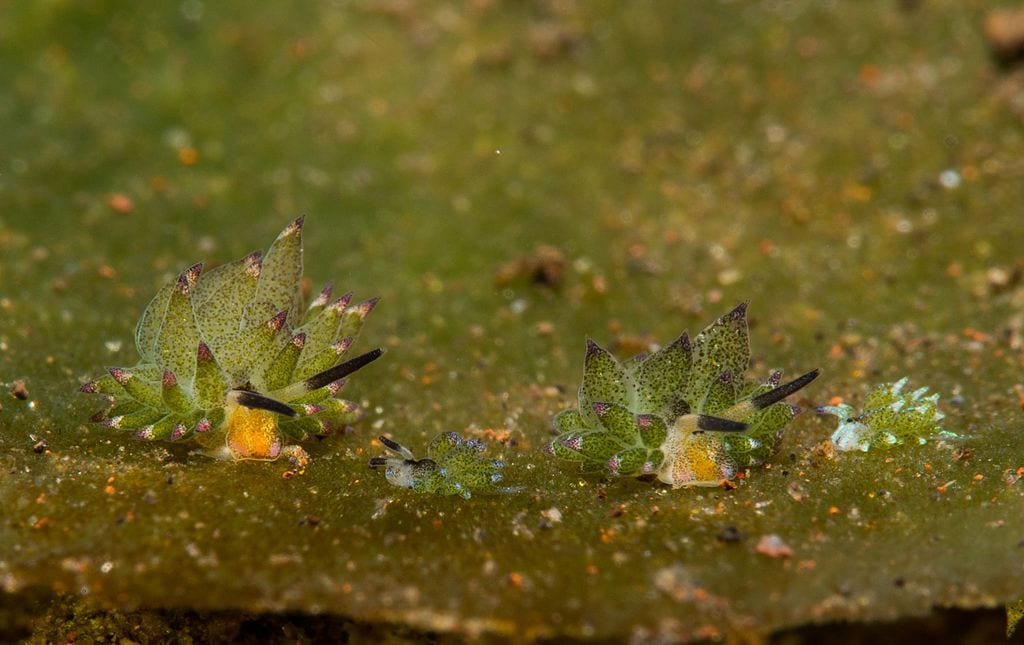
Although these tiny creatures are hermaphrodites, meaning that they possess both reproductive organs, they still need to find a mate to reproduce. After they find a mate, the two work together to produce a mass of eggs that looks like a tiny coil spiral. The fertilized eggs hatch into shelled larvae which turn into plankton. They remain plankton for up to two weeks, from where they turn into adorable baby leaf sheep.
Their Behaviors
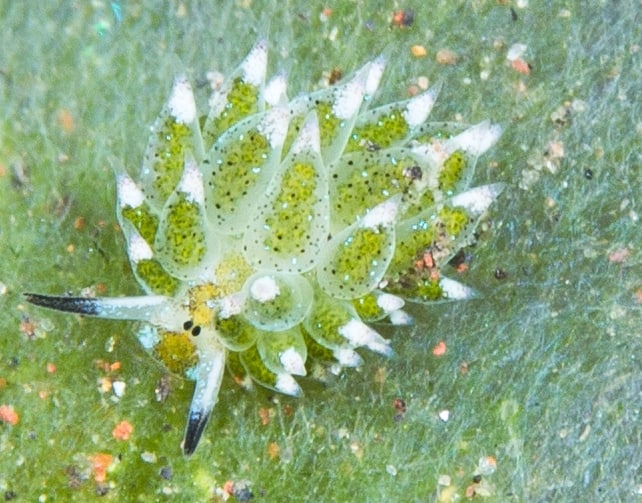
These adorable creatures are very slow-moving. They spend their days grazing on algae and when they swim they use their foot-like appendages to propel forward. When faced with danger they camouflage themselves in their algae homes by changing color to match the surrounding plants. They also release toxins created from the algae’s cells to deter the bigger animals.
Final Say on the Unique Creature
There is no doubt that this is one of the most fascinating cute creatures in the animal kingdom. I mean, what is not to love? From their sheep-like looks to their photosynthesizing abilities – the leaf sheep stole my heart!
If you enjoyed reading about the adorable photosynthesizing leaf sheep, you might enjoy these:
- The World’s Roundest Bird – Meet the Bearded Reedling
- Uncovering the Top 10 Aquatic Animals
- Watch: Alligators Chilling (Literally) in North Carolina
- Watch: Rescue Tiger Maruay Floating with His Ball in Thailand
- 15 Fascinating & Weird Animals in the Amazon Rainforest.
- Watch As Dogs Conduct An Orchestra – With Their Tails - April 24, 2024
- Rescue Puppy Becomes A Style Icon - April 23, 2024
- Proof That The Cat Distribution Theory Is Real - April 22, 2024

